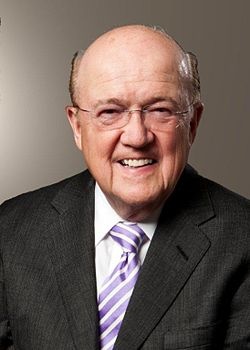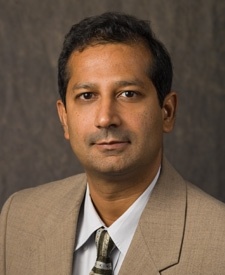Cardiac surgeons perform upwards of 1 million heart bypass procedures worldwide a year, each requiring on average 2.5 grafts using veins surgically removed from patients’ legs.

So what would it take to develop an artificial alternative?
That’s a question researchers and others have been struggling for decades to answer, including Minneapolis-based medical entrepreneur Manny Villafaña. Although the first coronary artery bypass surgery was performed nearly 60 years ago, he says the biggest obstacle has been a lack of materials that can adequately mimic the structure and functions of an artery.
That hasn’t stopped him from trying. Villafaña has spent a lifetime founding companies whose products have revolutionized the medical device industry. His contributions include Cardiac Pacemakers Inc., which introduced the long-life lithium iodine pacemaker that dominates today’s pacemaker market; and St. Jude Medical, which introduced the bileaflet mechanical heart valve.
“My wife says, ‘Manny you were born to do this project. Since I’ve known you, you’ve wondered how it could be done,” says Villafaña.
That wondering recently led Villafaña to the University of Iowa (or rather, back to Iowa; more on that later), where three researchers have been developing a cellulose-based material Villafaña finds promising for vascular grafting. In February, he signed a license with the UI Research Foundation to allow his newest company, Medical 21, to leverage the UI research as an important step toward—he hopes—eventually creating the world’s first viable artificial vascular graft for heart bypass.
The license will allow Medical 21 (the name, incidentally, a nod to the merging of a 21st century idea with 21st century technologies) to further develop the work of M.L. Raghavan, Ph.D., the Robert and Virginia Wheeler Faculty Fellow of Engineering in the UI College of Engineering and an expert on cardiovascular biomechanics and 3D modeling; Chaid Schwarz, a Ph.D. student in biomedical engineering working under his guidance; and Vijay Kumar, Ph.D., associate professor emeritus of Pharmaceutics and Translational Therapeutics in the UI College of Pharmacy and an expert in tissues engineering.
Raghavan, who runs the BioMechanics of Soft Tissues Lab at the UI Center for Computer Aided Design, said his lab studies the forces and motion of the heart and arteries and how they are affected by diseases (such as aneurysms) as a step toward designing devices to treat those diseases (such as stents, grafts, and prosthetic heart valves).
“Given the interdisciplinary nature of our field, we collaborate closely with surgeons, cardiologists and radiologists,” Raghavan said. “Research on a cellulose-based membrane for cardiovascular applications began a decade ago.”
Despite advances in the materials in recent years, Villafaña acknowledges the challenges are enormous.
The process of taking a new medical device or pharmaceutical to market is fraught with risk. Things can break down at any step along the way, from generating interest among investors and development of a working prototype to tests and approval by the U.S. Food and Drug Administration.
Villafaña says the Medical 21 team is up for the challenge.
“Given the way we’re designing this and the materials we’re using, the combination of the two, I think we have a chance to develop the holy grail of cardiac surgery, the small-diameter graft,” Villafaña said. “The University of Iowa has gone beyond anything I expected it to do. The licensing people have been fantastic and have helped us tremendously.”
The next step is to build a research team and persuade investors to support ongoing R&D to combine the material developed at the UI with a thin mesh sleeve made of nitinol wire (a very thin “memory wire” made of nickel and titanium).
Raghavan said he and his team are excited about the license agreement with Medical 21.

Meanwhile, Raghavan says his team is working on other technologies to, for instance, improve the performance of stents. He said students have helped tremendously with his research on cellulose, including Schwarz and, before him, Ben Dickerhoff, who has since graduated with a Master of Science degree in biomedical engineering. (Schwarz, incidentally, will take a position at Medical 21 after graduating from Iowa in May.)
“More often than not, such efforts take a long time to bear fruit,” Raghavan said. “Biology and medicine are tough fields to make progress in. Our current experience with our cellulose technology serves as an excellent demonstration to student researchers in our lab that all the hard work, focus and incremental advancements can indeed translate into substantive milestones in the real world.”
And about Villafaña’s Iowa connection? The New York native and son of Puerto Rican immigrants says his relationship with the UI dates back to the early 1980s, when he met his future wife, the former Elizabeth Elder, daughter of a UI College of Engineering alumnus (Howard J. Elder) and a graduate herself of the UI Tippie College of Business.
“Elizabeth always talked about her father,” Villafaña said. “He died about a year before I met her, so I never met him.”
Trying to think of a wedding gift for his future bride, Villafaña contacted someone at the UI and asked: “What do you need?”
His contact at the UI said the College of Engineering needed a computer lab, as personal computers were just emerging as important tools for research, design and engineering.
“So we worked out a donation to the UI on the condition the lab be named the Howard J. Elder Computing Lab,” Villafaña said.
Villafaña has continued his philanthropic support for the college, and also works with students in the UI ’s John Pappajohn Entrepreneurial Center and provides philanthropic support for the UI Department of Biology in the name of his mother.
In May 2014, the UI gave Villafaña an Honorary Doctor of Science degree to recognize his contributions to biomedical device development, biomedical engineering, civic leadership, and student success.
The UI Research Foundation is part of the UI Office of the Vice President for Research and Economic Development, which provides resources and support to researchers and scholars at the University of Iowa and to businesses across Iowa with the goal of forging new frontiers of discovery and innovation and promoting a culture of creativity that benefits the campus, the state, and the world. More at http://research.uiowa.edu, and on Twitter: @DaretoDiscover.
Photos: Manny Villafaña (top) and M.L. Raghavan.